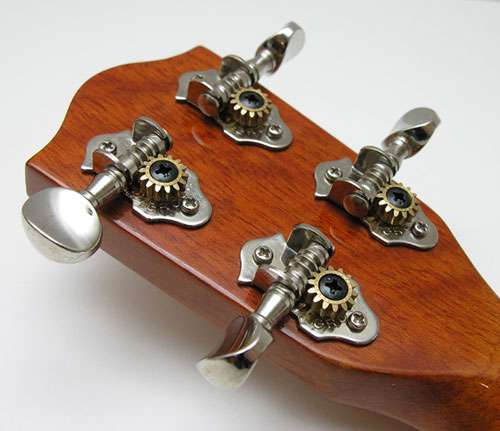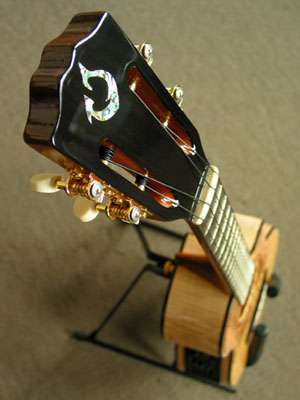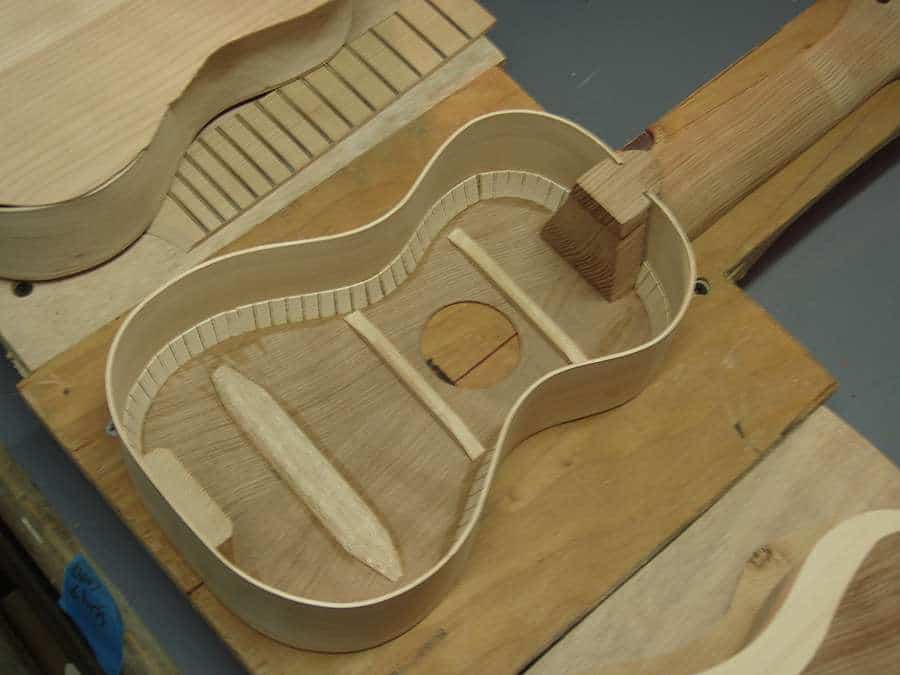The ukulele is a wonderful instrument, but it’s only natural that you don’t want to spend a fortune on your first one. But what is the best cheap ukulele? In this article I’ll try to help you by telling you exactly what to look out for when buying a good budget ukulele and how to set it up properly afterwards.
Don’t have the time to do ukulele research? These are my personally tested favorite budget ukuleles:
- Makala MK-S Soprano ($49)
- Kala KA-15S Soprano ($55) (UkuReviews)
- Strong Wind Concert ($56) (UkuReviews)
- Kala LTP-S Soprano starter pack ($59)
- Kala KA-C Concert ($99)
- Kala KA-15T Tenor ($125)
- Kala KA-BMB-S solid bamboo soprano ($119) (UkuReviews)
- Kala KA-BMB-C solid bamboo concert ($129) (UkuReviews)
- Kala KA-BMB-T solid bamboo tenor ($149) (UkuReviews)
Check this out when looking for the best cheap ukulele
Not really familiar with the different parts of the ukulele listed below? Learn more about them in this guide with an easy to use ukulele diagram and downloadable PDF for easy referencing.
Tuners
Almost all budget ukuleles, including the best cheap ukuleles, will come with geared tuning keys as pictured above. Tuning keys are one of the most important parts of your ukulele. If one of them is loose and can’t hold a tuning, the whole ukulele becomes unplayable.

When looking at ukuleles, check carefully that they are fitted tightly in the ukulele head. Try adjusting the tuners and watch carefully to check that they do not return to their original position.
This is one the most frequent issues I have experienced when considering budget or cheap ukuleles. If a geared tuner is loose, you can try fixing it by tightening it with a Philips screwdriver. Try looking for tuning keys which are enclosed, although more recently the geared tuning key has seen a lot of improvements and is being used on more high-end instruments as well.
Headstock
A headstock is preferably not in a straight line with the neck itself. There needs to be some angle to obtain good string pressure at the nut. You will find the ukulele buzzes if the headstock is not angled properly.

Neck and fretboard
Moving down to the body from the headstock, we find the neck and fretboard. Make sure that the neck is straight. This is easy to check by looking along it from the headstock to the body. You can also simply take a ruler and put it on the frets. If the neck is perfectly straight, it should make contact with every single fret.
Finding a budget ukulele with a straight neck can be tricky, but they are out there! A straight neck is crucial to avoid buzzing.
The fret ends on the fretboard need to be smooth. Cheap ukuleles tend to have simple metal bars as frets, and they may be sharp at the edges. This will make playing uncomfortable and cause irritation. What is more, the top of the fret should be smooth as this will lengthen the lifetime of your strings.
Body construction
When shopping for a budget ukulele, you are unlikely to find one with a solid wooden top, back and/or sides. They are all made of plywood. Try to look at the inside of the ukulele to spot loose pieces or sections of plywood: these are an instant do-not-buy sign.

Also check whether the internal braces are firmly glued together and not hanging loose. All these things will cause a very annoying buzz and will muffle the sound of your brand-new ukulele. On top of that, it is very hard (if not impossible) to fix this yourself, and honestly not worth the effort.
Bridge
What is often forgotten when buying a budget ukulele is the bridge position. This is very important as it will define the intonation of the ukulele. Measure the distance from the nut (on the headstock) to the end of the fret board at fret 12. Then measure the distance from fret 12 to the saddle (in the bridge). This distance should be more or less the same.
Saddle
We have arrived at the saddle. This is located in the bridge. If possible, buy a ukulele with a removable saddle. This will allow you to adjust the action of your ukulele by changing the saddle height.
The saddle should protrude by at least 2 mm (0.08 inches) above the bridge, but this depends a lot on the bridge construction and how bulky it is. The saddle should not be sitting loose in the bridge, as the saddle is the part that transfers the vibrations from the strings to the ukulele body.
Adjusting the action is not that difficult. A low action is always preferable as it is easier and more pleasant to play on. Measure the height of the strings at the 12th fret. If they are more than 2 mm high, take out the saddle and sand the bottom (!) of it, as evenly as possible, until the desired height is reached.
Strings
Finally, we come to the strings. All budget ukuleles (or almost all of them) will come with very cheap plastic strings, like fishing line. These often have a black(ish) colour. If your budget allows it, replace them with Aquila strings and the difference will be immense. You can buy Aquila strings for as little as $5-$10.
Conclusion – How to find the best cheap ukulele
If you take all of the above into account, it is definitely possible to find a very good ukulele – and maybe even a great one – for less than $100. An instrument like that will give you years of pleasure!
Need more input?
Feel free to contact me whenever you need more information about looking out for the best cheap or budget ukulele.
Also interested in the ultimate ukulele buying guide?
